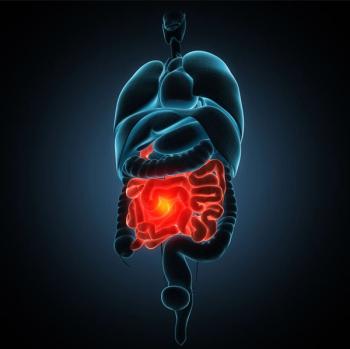
Automatic Detection System Could Aid Endoscopists in Polyp Detection
SAN ANTONIO - A new automatic system had an overall sensitivity of 88% and a 98.4% specificity for polyp detection; study results were presented Sunday at the ACG 2019 Scientific Sessions.
SAN ANTONIO - A new proof-of-concept study looking at detection of colon polyps found that together endoscopists and the new Automatic Polyp Detection System (APDS; Magentiq Eye) missed only 1 polyp during colonoscopies.
In the age-old battle of man vs machine, the best outcome may be a result of a close partnership.
The authors conclude in their abstract that the APDS may have “the potential to behave as a complementary tool during colonoscopy in order to alert the endoscopist to lesions that may otherwise be missed.” The study was presented by Jasna I. Beard, MD, of University of Tennessee Health Science Center, Chattanooga, Tennessee, and colleagues, on Sunday, October 27, 2019, at the 2019 Annual Scientific Meeting of the American College of Gastroenterology, in San Antonio, Tex.
Many cancers of the colon may be the result of missed lesions on colonoscopy. The APDS was developed to enhance the ability of endoscopists to detect polyps. It is currently developed for offline use, but could be used in real-time in the future. Currently, the system records colonoscopy videos and reviews them to generate a computerized automatic signature of polyps.
In this study, the trained system was tested on a known testing database of 35 videos. Among the 35 290 frames of these videos were 35 polyps: 10 in the right colon, 5 in the transverse colon, and 20 in the left colon.
After reviewing the videos, physicians missed 4 polyps-3 in the transverse colon and 1 in the descending colon. Of the missed polyps, one was <3 mm, 2 measured 3 to 6 mm, and 1 was 6 to 10 mm.
Patient Care® Online is now on
The APDS system had an overall sensitivity of 88% and a 98.4% specificity. Five polyps were missed by APDS, for a detection rate of 85.8%. Of the missed lesions, 2 were in the ascending colon, 2 in the transverse colon, and 1 in the descending colon.
Only 1 polyp was missed by both physicians and APDS.
The study was awarded the Presidential Poster Award.
Source: Beard JI, Kahloon A, Siersema P, Gross S, Jacob H.
More coverage from the
Newsletter
Enhance your clinical practice with the Patient Care newsletter, offering the latest evidence-based guidelines, diagnostic insights, and treatment strategies for primary care physicians.































































































































































































































































































































